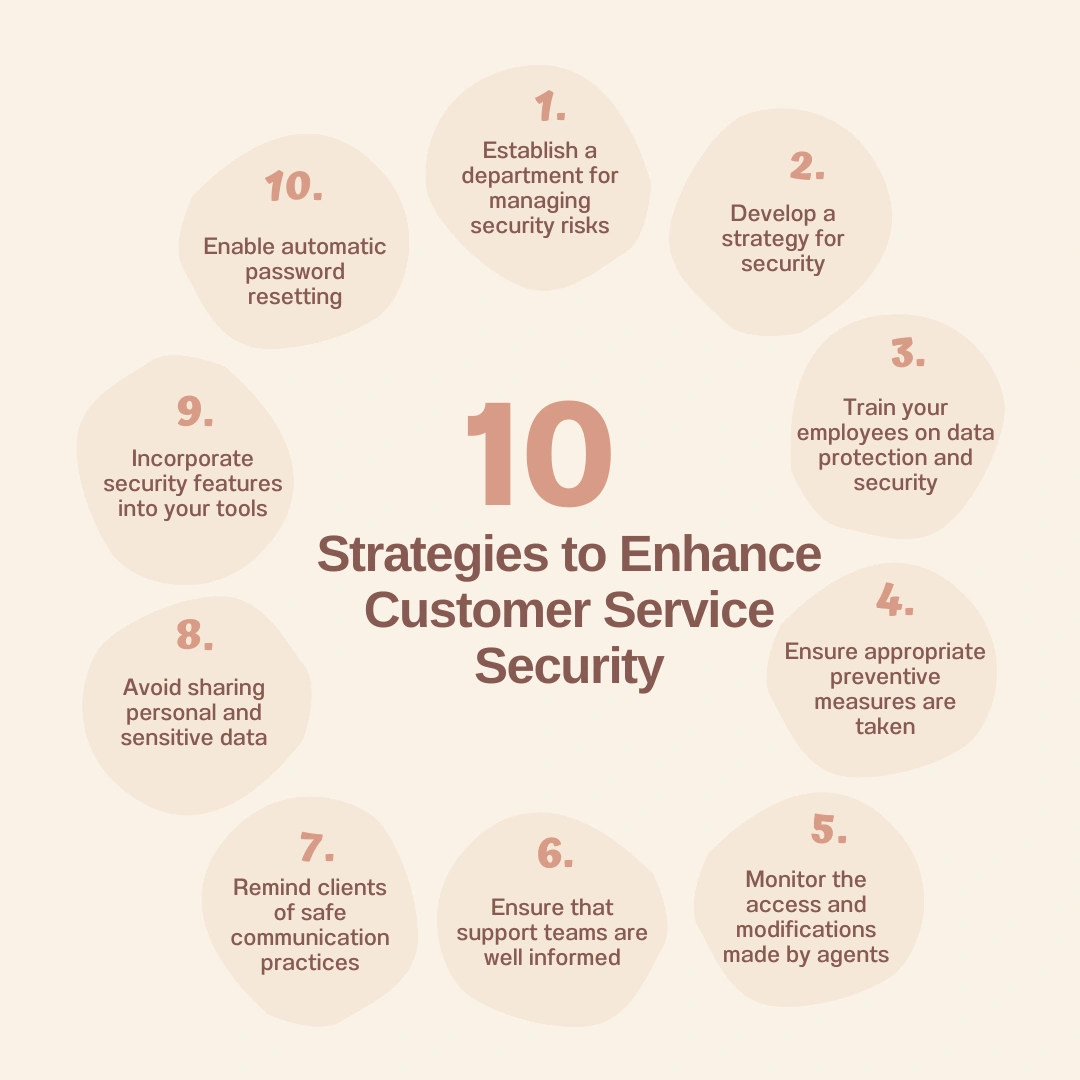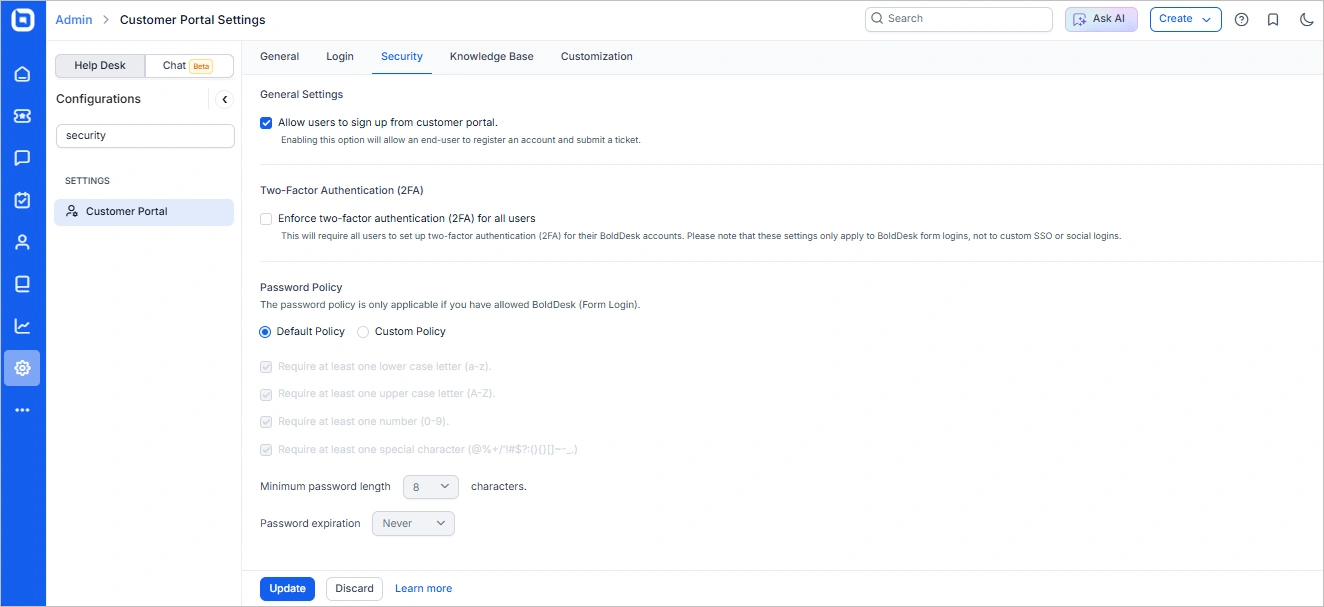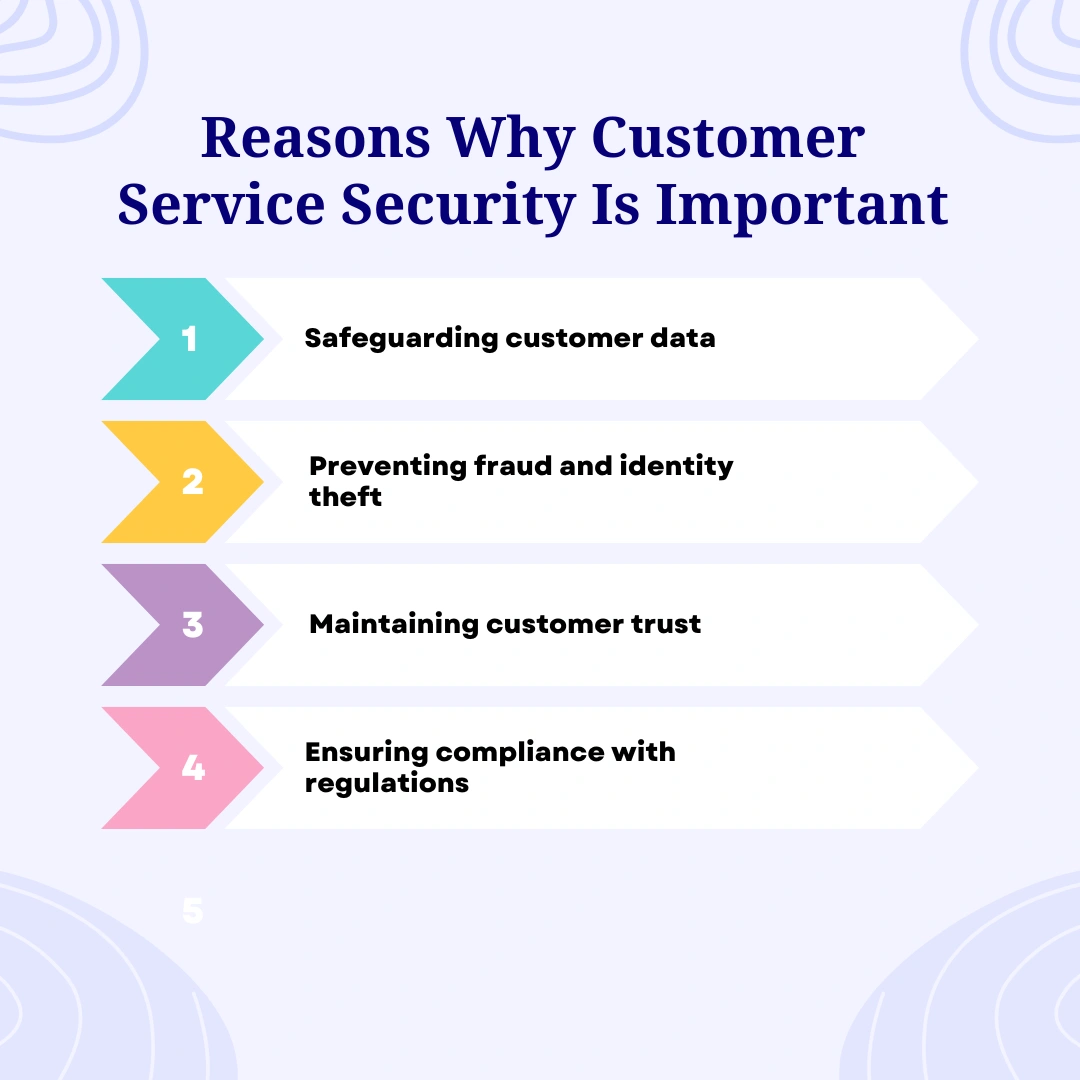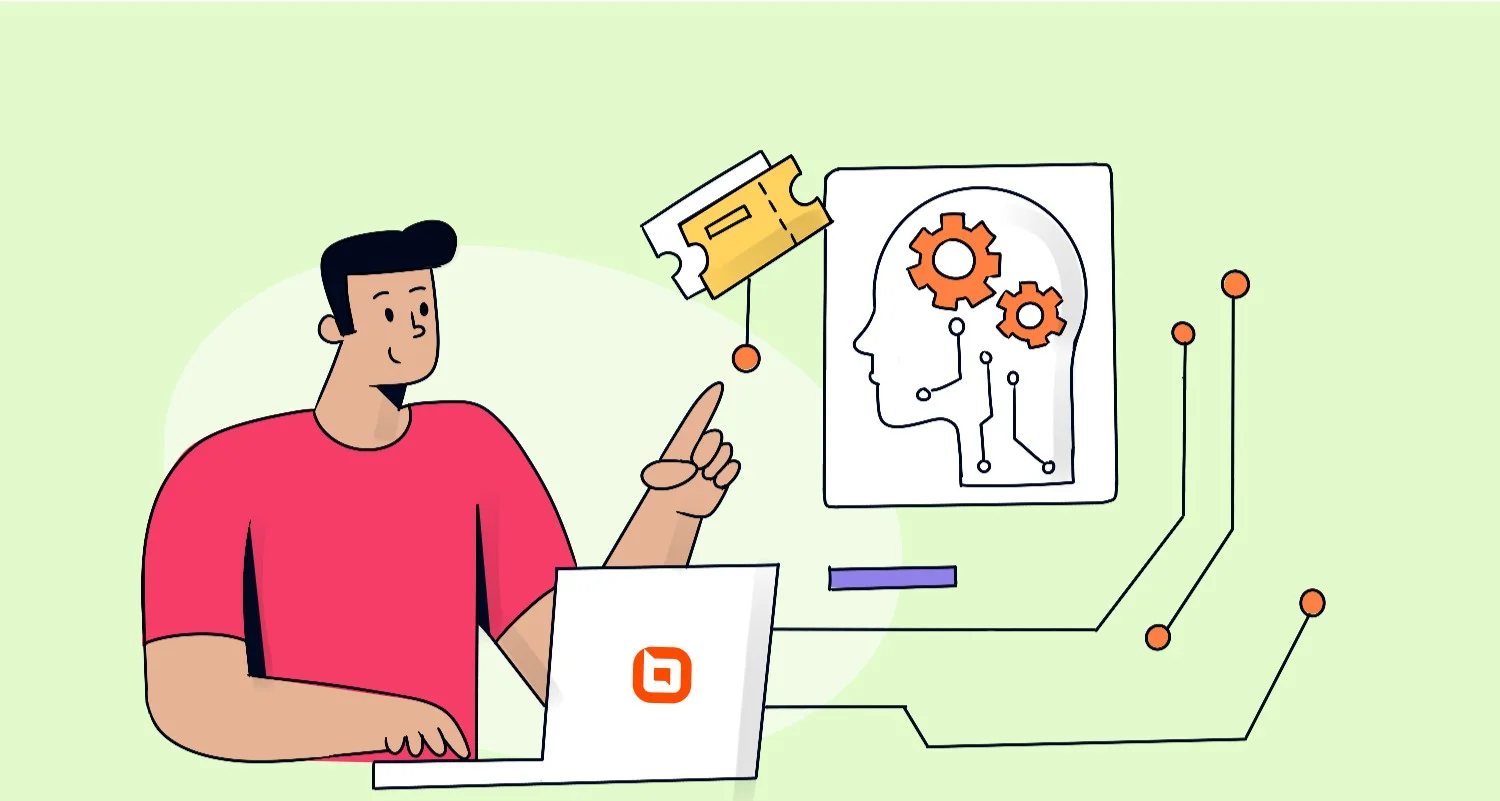Security is a crucial aspect of any organization’s customer support functions. It deals with protecting sensitive customer information, ensuring the privacy and confidentiality of communication, and maintaining the overall trust between customers and the company.
Studies indicate that data security and privacy issues are a concern for 79% of consumers.
With the increasing dependence on digital channels for customer interactions and the growing threats to data security, it is essential to understand and implement robust customer service security practices.
In this blog, we will discuss what customer service security is, the potential risks, and advice on enhancing your customer service security measures.
What is customer service security?
Customer service security refers to the measures and practices implemented by a company to protect the sensitive information of its customers and ensure their privacy and safety while interacting with customer support representatives.
A strong privacy policy makes a company more trustworthy to 90% of individuals.
Information security is crucial for maintaining customer trust and ensuring compliance with data protection regulations.
Common security attack strategies against your support staff
Business success heavily relies on customer trust, which can be quickly undermined by security breaches and data loss incidents. With that in mind, let’s look at some common ways customer service security can be compromised.
Digitally
Digital dangers are unauthorized access, theft, or manipulation of electronic data, systems, or networks, causing:
- Data breaches: Unauthorized access to customer data can lead to data breaches, compromising sensitive information.
- Disruption in service: Viruses can cause disruptions in customer service operations, such as network outages or system failures, resulting in delays or interruptions in service delivery.
Hackers impersonate your employees or customers
Through email or phone scams, impersonators can gain unauthorized access to customers’ personal and financial information.
This data can be used for fraudulent activities, including unauthorized transactions and identity theft.
Impersonators can trick customers into revealing sensitive information by posing as legitimate customer service staff.
They may also send emails or text messages containing malicious links or attachments, which, when clicked or opened, can result in the installation of malware and the theft of personal information.
Some industries are more prone to this sort of scam, especially ones with vulnerable customers in confusing, emotional situations. Scammers will use emotional manipulation and a false sense of urgency to maliciously:
- Exploit customer vulnerabilities.
- Gain unauthorized access to sensitive information.
- Commit fraud.
If this involves access to your systems, it can result in data breaches, financial losses, reputational damage for the company.
Compromises involving physical aspects
Physical compromises, such as unauthorized access to customer service facilities or workstations, can lead to the same security problems as remote unauthorized access to your digital systems.
It can also result in the theft or damage of critical equipment, such as computers, servers, or communication devices, and can disrupt the operations of the customer service department.
How to improve customer service security
The foremost objective of customer service security is to safeguard customer data, including personal and financial information, from unauthorized access, theft, or misuse.

Let’s discuss 10 ways to improve customer security.
1. Establish a department for managing security risks
Comprehending your cybersecurity stance will enable you to implement a risk management program. Businesses need an expert or a team of experts to assess their risks and the steps needed to mitigate them.
The purpose of a security risk management department is to:
- Evaluate risks by analyzing the probability of different types of threats.
- Identify and apply appropriate risk reduction methods.
- Keep track of internal data usage.
Security risk managers can create efficient, next-generation network security tactics to prevent potential cyber hazards and their consequences.
2. Develop a strategy for security
To enhance safety measures within your support team, it is crucial to consistently implement and update a strategy that minimizes potential risk.
Having a well-defined plan for dealing with potential attacks, too, can significantly improve the speed and efficiency of your response.
This plan should secure data following a breach and outline the necessary steps to resolve the situation.
A readily available checklist outlining the signs of a breach and the steps to take in the event of such a security issue will significantly increase the chances of a prompt and secure response.
3. Educate and train your employees on data protection and security
A global survey revealed that 60% of company executives possess an inadequate comprehension of the risk of data breaches via third parties. Furthermore, 20% demonstrated little to no understanding of these risks at all (PWC). Essentially, your employees are unconsciously making your business susceptible to threats from within.
To begin, it is crucial to establish a security awareness program within your organization. Regular and consistent training sessions are essential components of your strategy to prevent cybercrime.
Ensure that your entire support team is trained on the importance of information security and confirm their awareness of all legal obligations.
Instruct them on the appropriate course of action in case of a suspected attack and methods for maintaining data security.
4. Ensure appropriate preventive measures are taken
Some of the preventive measures you can undertake are:
- Keep your software up to date: Software updates usually comprise security patches, which can aid in safeguarding your systems against recognized vulnerabilities.
- Use authentication protocols: Authentication aims to ensure that clients are, indeed, who they claim to be.
- Regular security audits: Regularly perform security evaluations and audits to pinpoint possible weaknesses and opportunities for enhancement in your customer service systems and procedures.
5. Monitor the access and modifications made by agents
Limit employee access to and management of customer data to a need-to-know basis. This can aid in preventing unauthorized entry and minimizing the likelihood of data breach incidents.

When customer service representatives require access, recording their entry to and alterations of client data will aid in detecting fraud and identifying hazardous situations sooner.
6. Ensure that support teams are well informed
Establish clear lines of communication among support teams, management, and other departments to ensure that any security concerns or incidents are promptly addressed. Encourage open discussions about potential security risks and how to mitigate them.
7. Remind clients of safe communication practices
One of the best ways to ensure the safety and security of your customers’ data is by frequently reminding them to only communicate through official channels.
If it is the case for your company, reassure customers that your company will never initiate contact via phone, email, or text asking for sensitive information such as passwords, credit card numbers, or social security numbers.
Have this reminder prominently featured in your customer portal and possibly as an add-on to official communications.
8. Avoid sharing personal and sensitive data
This applies to both employees and customers.
According to a study conducted by SafetyDetectives, email is the source of 92% of malware. Clients should refrain from sending emails containing their passwords or credit card details in plain text.
Employees should equally avoid requesting customers to disclose any personal information unless it is absolutely essential and through secure pathways.
9. Incorporate security features into your tools
Whenever feasible, incorporate secure mechanisms within your systems instead of depending on individuals to manually adhere to the correct protocols.

Implementing multi-factor authentication (MFA) might be an effective solution for enhancing the security of your customer service.
10. Enable automatic password resetting
Avoid requiring your customers to email for a password reset, as it poses a security threat. Instead, invest in software that automates the password reset process and requests security information from customers to confirm their identity.
Why is customer service security important?
Customer service security protects both your customers and your business from potential harm.

Here’s a breakdown of why it’s important:
- Safeguarding customer data: Customer service interactions often involve sensitive information like addresses, credit card numbers, and account details. Robust security measures ensure this personal data is protected from unauthorized access, breaches, or leaks.
- Preventing fraud and identity theft: Hackers and scammers may target or impersonate customer service representatives to gain access to accounts or personal information. Strong security protocols minimize the risk of fraudulent activity and identity theft.
- Maintaining customer trust: Customers entrust their data to your business when they seek support. When you have a reputation for high security standards, it builds public trust in your brand.
- Ensuring compliance with regulations: Many regions have data privacy regulations that require specific safety precautions for customer information. Robust customer service security helps ensure your business complies with these regulations and avoids potential fines or legal repercussions.
How does BoldDesk enhance customer service security?
BoldDesk enhances customer service security by integrating advanced security measures to protect sensitive consumer data, prevent unauthorized access, and guarantee adherence to industry regulations. Here’s how it strengthens security:
End-to-end encryption – All customer interactions, tickets, and data exchanges are encrypted using secure protocols, preventing unauthorized access and data breaches.
Secure authentication methods – BoldDesk supports 2FA, single sign-on (SSO), and password policies to prevent unauthorized logins and strengthen account security.
Audit logs and activity tracking – All system actions are recorded, enabling companies to keep an eye on and keep track of activities for compliance and security reasons.
IP whitelisting and access restrictions – Organizations may simply eliminate unauthorized access from outside networks by restricting only specific IP addresses or geographical locations.
Data backup and disaster recovery—BoldDesk protects clients’ information from loss due to unforeseen disasters by setting disaster recovery plans and performing frequent data backups.
Compliance with industry standards – The platform follows regulatory requirements such as GDPR, HIPAA, and SOC 2, guaranteeing that consumer data is handled securely and ethically.
Role-based access control – Administrators can assign specific roles and permissions to users, ensuring that only authorized personnel have access to sensitive data.
Enhance your customer service security with proven strategies
Given the rising number of cyberattacks and the high stakes involved in protecting customer information, customer service security should be a top priority for any organization.
By adopting these robust security measures and fostering a culture of security awareness, organizations can safeguard customer data, maintain trust, and ensure the overall success of their customer service operations.
Enhance your customer service security with the SOC 2® Type 2-certified help desk software, BoldDesk®. Register for a free trial and discover its potential for your team. If you need assistance or have any questions, the BoldDesk support team is constantly at your service. To learn more about how BoldDesk can be customized to suit your business requirements, contact us to arrange a live demo.
Related articles


















 Email Ticketing System
Email Ticketing System Shared Inbox Software
Shared Inbox Software Multi Brand Help Desk
Multi Brand Help Desk Internal Help Desk Software
Internal Help Desk Software Trouble Ticketing Software
Trouble Ticketing Software Mobile Help Desk
Mobile Help Desk 


















